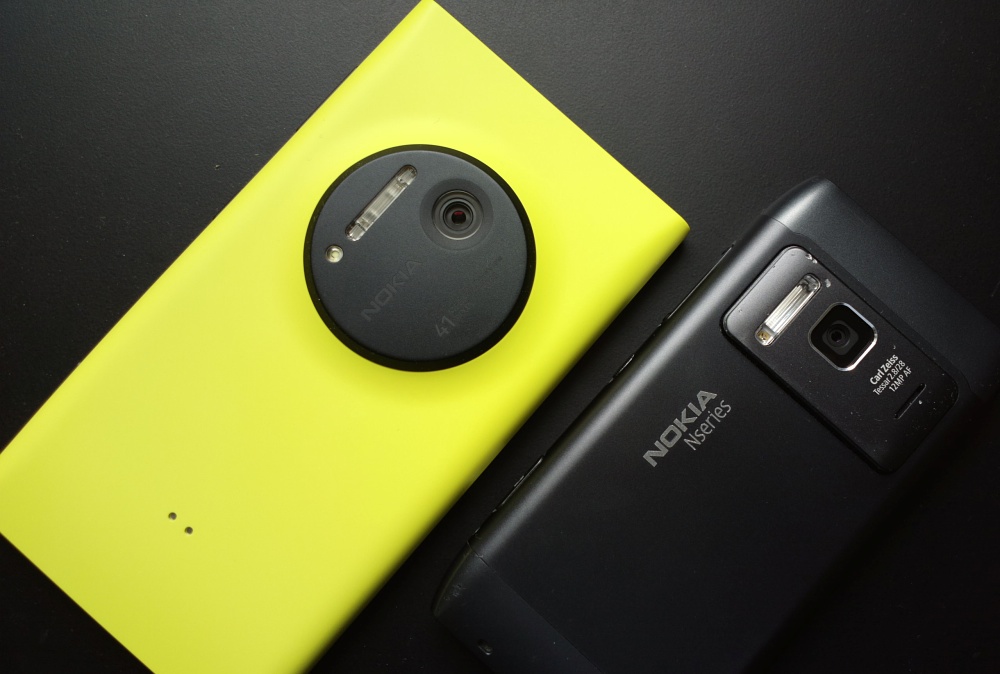
Comparing the N8 with the 1020, in terms of camera results, isn't that trivial:
- one shoots its 16:9 photos at 9 megapixels, while the latter shoots them at 5 megapixels. So there's an innate disparity in optimal resolution.
- there's a very different 'field of view', with the 1020's optics being more wide angle - note that there's no 'best' here, they're simply different.
- add in the optional lossless zoom on the 1020 - should I use it in each shot or stay away completely?
- Lumia 1020 photos get degraded once any reframing has been done, so in each case below, any zooming was done at capture time, i.e. I didn't reframe at all.
In practice, I tried to steer a middle ground, using the 1020's zoom a little if the subject needed it, or a lot (where mentioned below) - in each case I tried to think about the shot I wanted to achieve and then using the N8 and 1020 to try and deliver the framing that was in my head. But do note that the angle and resolution issues mentioned above mean that the photo crops (to look at quality in detail) won't match up exactly.
Note that, aside from PureView zoom, all shots below were taken on full 'auto' - both phones allow many settings to be tweaked, but that introduces a thousand times the complications when doing direct comparisons! Full auto also shows up well the sort of performance that 99% of users will see.
In each test shot/scenario, I'll show a thumbnail of how each phone camera shot the scene - click any of these to download the original JPGs if you're interested. Below the thumbnails, I'll provide 1:1 (typically) crops from the centre of each photo, so that you can compare the detail captured. And, as I often do, I'll score them as I go and add up at the end - just for fun!
Test 1: Aircraft, hazy sun, 15 metres
Here are the shots from the Nokia N8 (left) and Nokia Lumia 1020 (right, using a little PureView zoom so as to match the framing):
Note that the N8 has better dynamic range here, with detail showing in the sky, with the 1020's version blowing out the sky completely and with very saturated colours (see the yellowish gravel, for example).
And here are central crops, for easy comparison, Nokia N8 on top and Nokia Lumia 1020 on the bottom:
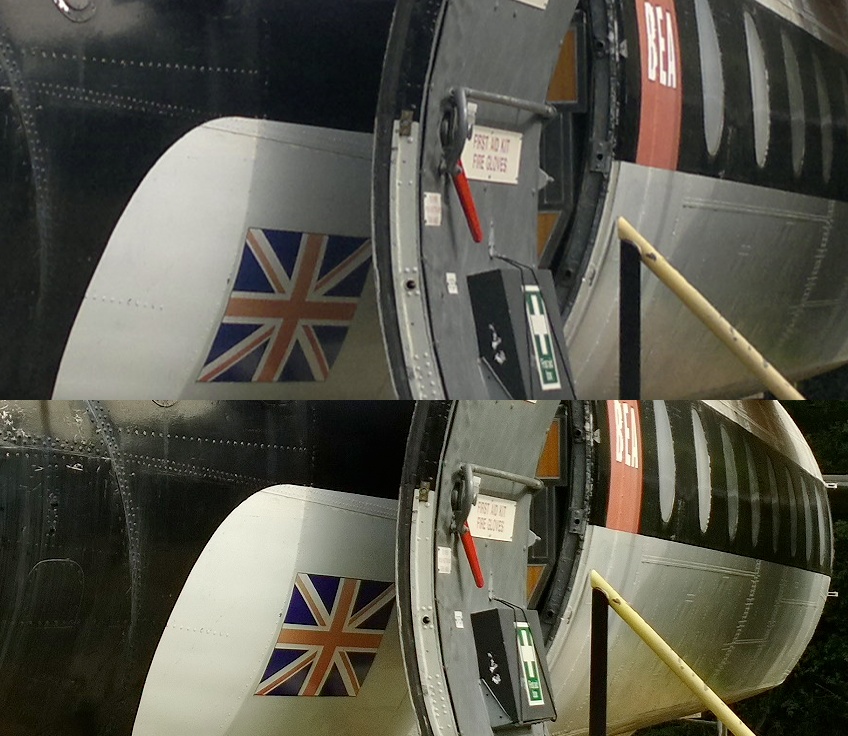
In addition to the extra saturation, there's also extra sharpening in the Lumia 1020's photo - you may remember that the N8, famously, didn't use any image processing at all, with neutral colours and no sharpening. There should be extra detail in the N8 photo because of the higher resolution, but you have to admire the super-polished way the sharpening has been implemented in the 1020, the bottom crop looks wonderfully crisp. As I found with my Nokia 808 comparisons, the 1020's images always look a little artificial, but very pleasing when viewed on-screen here.
A tough call here. Nokia N8: 9 pts, Nokia Lumia 1020: 9 pts
Test 2: Green park scene, hazy sun, focus on tree at 25 metres
I made sure that a focus lock was obtained on the tree in each case, as I wanted to look at detail in its leaves in the crop. Here are the shots from the Nokia N8 (left) and Nokia Lumia 1020 (note the natural framing here, i.e. the 1020 gives a wider field of view):
As usual, the extra saturation in the 1020 photo delivers a better rendition of the vibrancy of all that lush green grass. Yes, the N8's image could be saturated more and enhanced in an editing package, but the raw photo is a little dull...
And here are central crops, for easy comparison, Nokia N8 on top and Nokia Lumia 1020 on the bottom:
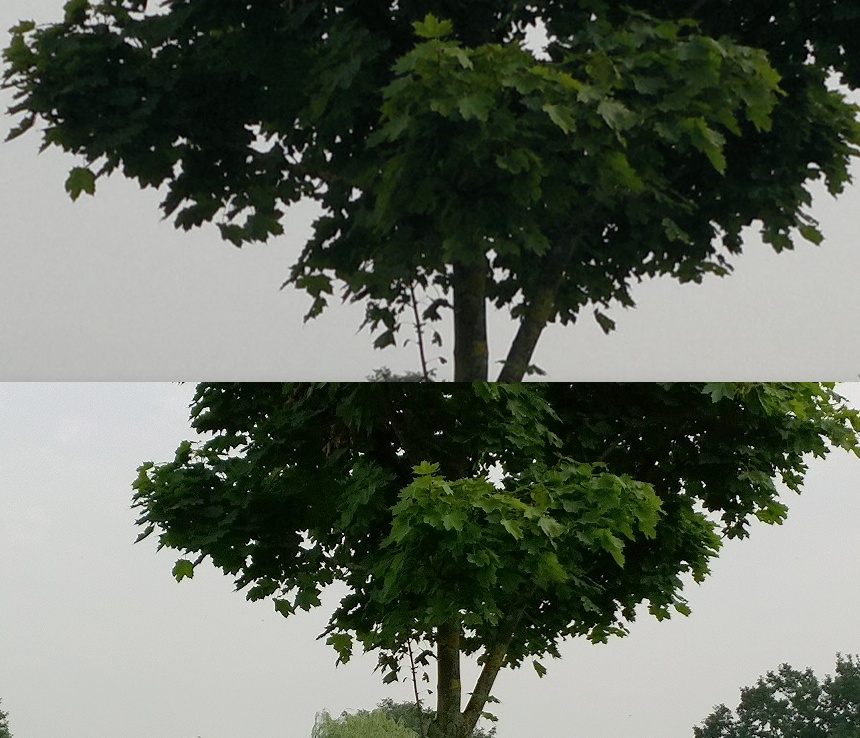
This is another good example of the art that has gone into the Lumia 1020's image processing. There's clearly more natural detail in the N8's rendition of the leaves, yet the 1020's photo looks better, more vibrant in every way. Right on the edge of looking too sharpened, but staying on the right side of that limit.
Nokia N8: 7 pts, Nokia Lumia 1020: 8 pts
Test 3: Tiny flower macro, hazy sun
The flower really was tiny, so this is an extreme macro shot! Here are the shots from the Nokia N8 (left) and Nokia Lumia 1020:
The colour from the flower looks amazing, but has the 1020 gone too far this time? Here are central crops, for easy comparison, Nokia N8 on top and Nokia Lumia 1020 on the bottom:
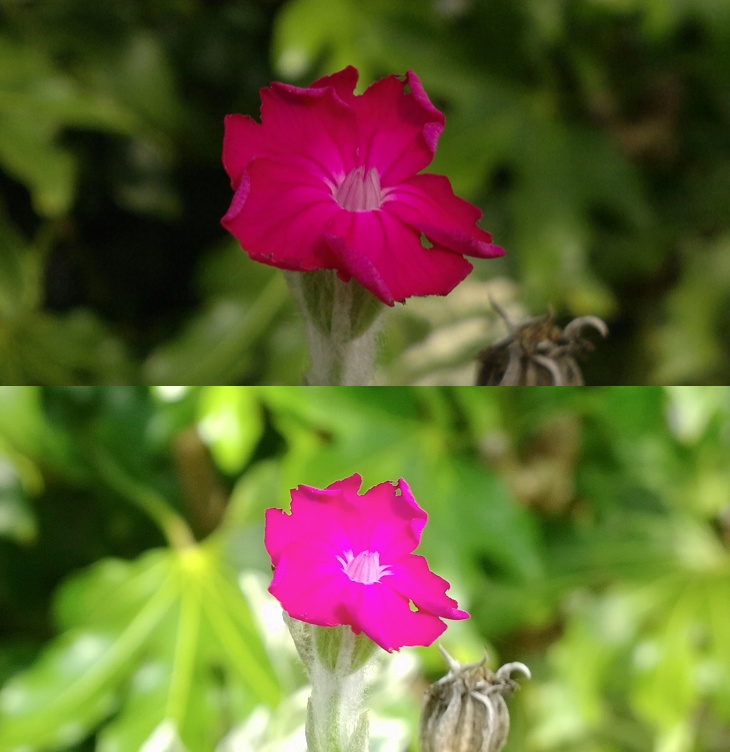
This is where the heavy image processing in the Lumia 1020 (and typical of modern smartphones generally) falls down - it simply can't cope with such a block of colour detail that's already very 'saturated'. The N8 shows wonderfully delicate detail in the petals, while the 1020 shows just a block of uniform pink.
Nokia N8: 8 pts, Nokia Lumia 1020: 5 pts
Test 4: Lake scene, lots of greenery, overcast
Masses of greenery often cause camera phone JPG processing to run into trouble - there simply isn't the 'bandwidth' to cope with all the subtle detail. Here are the shots from the Nokia N8 (left) and Nokia Lumia 1020:
And here are central crops, for easy comparison, Nokia N8 on top and Nokia Lumia 1020 on the bottom:
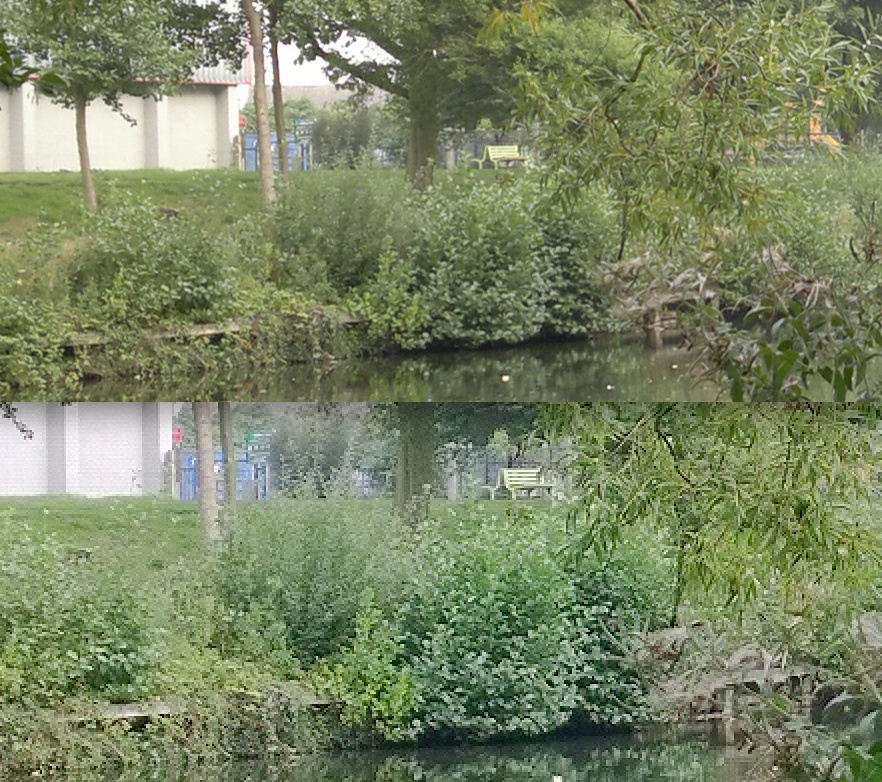
Here the extra native resolution (not allowing for the 1020's zoom) of the N8 and the lack of image processing show the phone camera up in the best possible light. In contrast, the handling of the intense detail in the 1020's image processing algorithms leads to somewhat unpleasant blockiness - very typical of modern phones, but the N8's photo is clearly superior overall.
Nokia N8: 9 pts, Nokia Lumia 1020: 6 pts
Test 5: Clock detail on building roof, hazy sun, 20 metres
Right, time to use that PureView 'lossless' zoom on the Lumia 1020, since I was only interested in the small area of the frame. Here are the shots from the Nokia N8 (left) and Nokia Lumia 1020 (right, using a little PureView zoom so as to match the framing):
And here are central crops, for easy comparison, Nokia N8 on top and Nokia Lumia 1020 on the bottom:
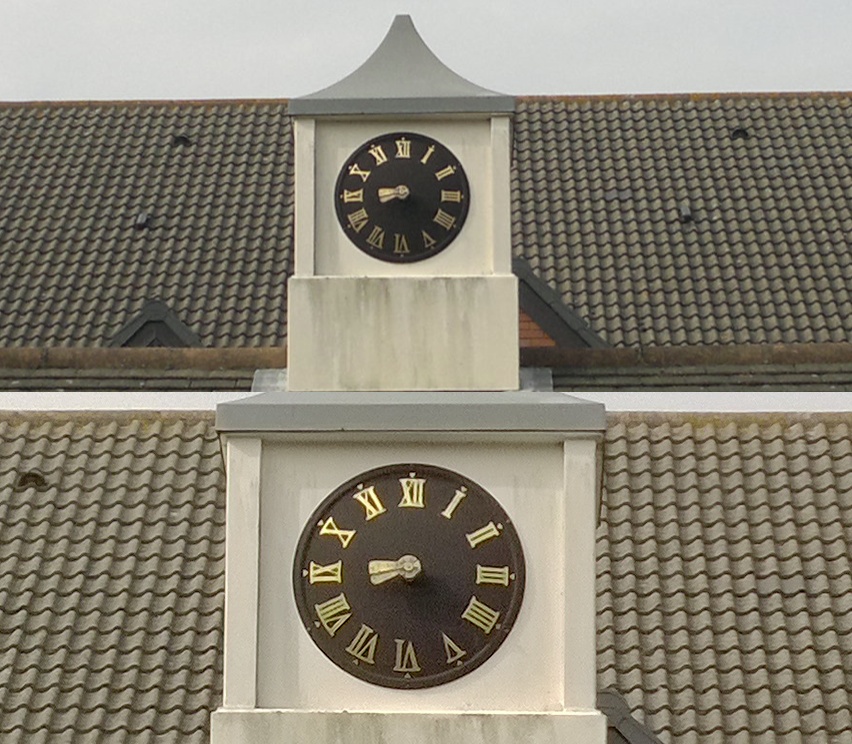
Despite a few artefacts creeping into the 1020's photo here, the power of the PureView zoom system (up to 2.5x) is shown up well here, with far more detail on the clock face. The N8's native 9MP resolution here and lack of image processing produces a very decent and natural photo, but I was interested in raw detail here.
Nokia N8: 6 pts, Nokia Lumia 1020: 9 pts
Test 6: Model macro, indoors by window, through perspex
I wanted a macros that didn't involve another flower! The model was in a permanent case, so I was focussing (with care) on the driver's helmet and the 'Valvoline' legend beside him. Here are the shots from the Nokia N8 (left) and Nokia Lumia 1020 (right, using quite a bit PureView zoom to achieve a focus lock with the same framing):
And here are central crops, for easy comparison, Nokia N8 on top and Nokia Lumia 1020 on the bottom:
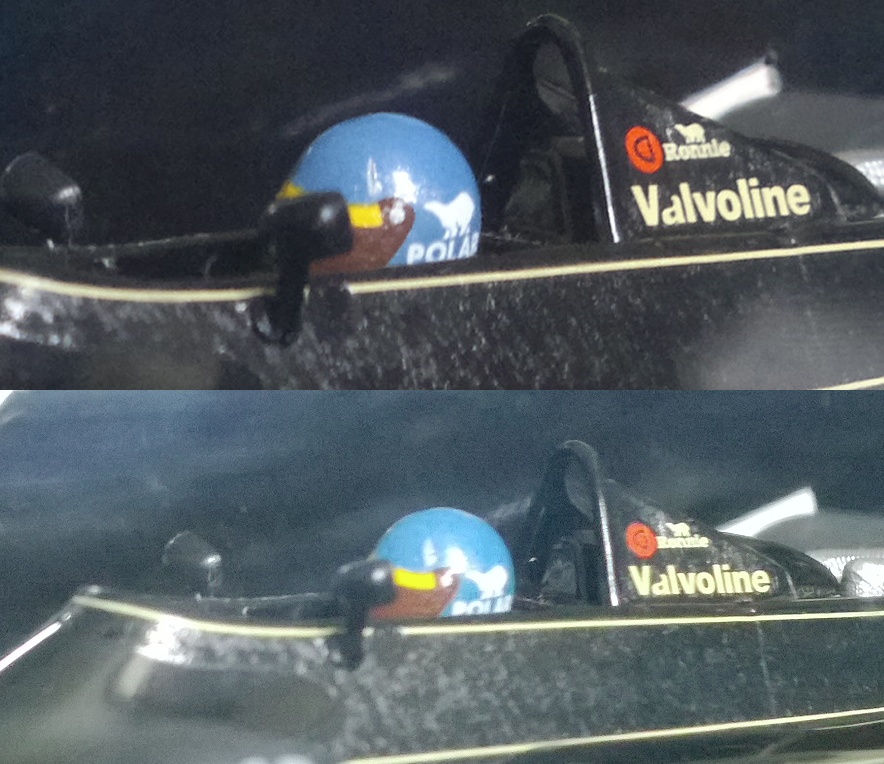
The Lumia 1020's image here is disappointing. It was focussed properly, but shooting through perspex and having to give up most of its oversampling were issues. In contrast, the natural look of the N8's image, with its natively narrower field of view and higher resolution, gives it the win here.
Nokia N8: 8 pts, Nokia Lumia 1020: 6 pts
Test 7: Indoor zoom example, picture detail
Say you wanted to capture an object or picture indoors but can't get closer for a proper macro (e.g. in a museum or gallery). No flash needed, but PureView zoom most definitely allowed. Here are the shots from the Nokia N8 (left) and Nokia Lumia 1020 (right, using full PureView zoom):
And here are central crops, for easy comparison, Nokia N8 on top and Nokia Lumia 1020 on the bottom:
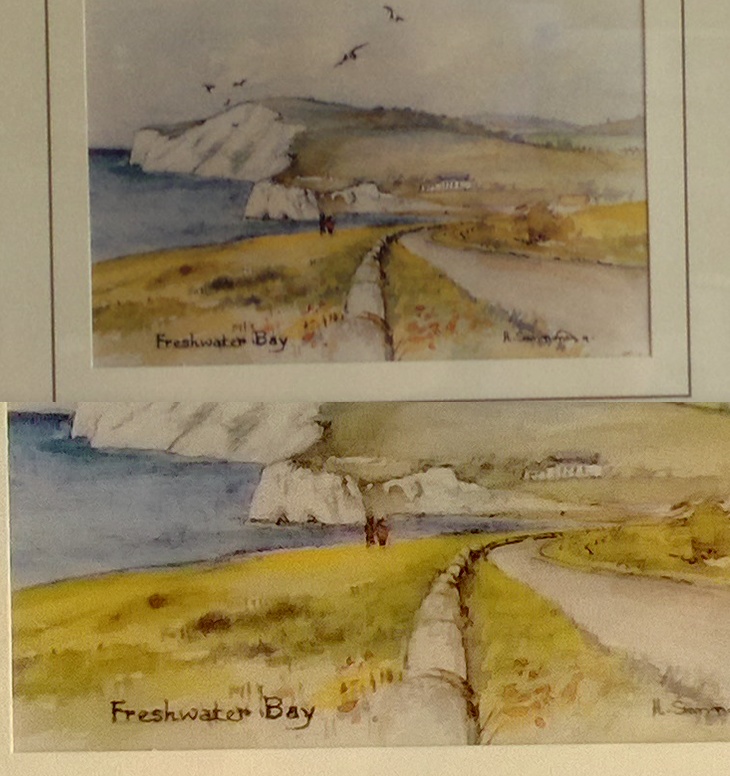
Again a dramatic demo of the benefit of having the larger and ultimately higher resolution in the underlying sensor on the Lumia 1020, there's far more detail able to be resolved and rendered well. The photo surround in real life is coloured some way between the two shades here, so neither phone camera gets it quite right.
Nokia N8: 5 pts, Nokia Lumia 1020: 9 pts
Test 8: Party scene mock-up, very dark, moving subject, 2 metres
In the real world, many of our photos will be of friends and family, out having a good time at events and gatherings, indoors. But I wanted to cover both types of party/event lighting. Here, taken in pitch darkness, and with me deliberately moving as the photo was taken, are the shots from the Nokia N8 (left) and Nokia Lumia 1020 (right, using a little PureView zoom so as to match the framing):
Quite a dramatic difference in coloration - the wall is actually light brown, so the 1020 gets much closer, also getting the gold surround on the painting properly. And here are central crops, for easy comparison, Nokia N8 on top and Nokia Lumia 1020 on the bottom:
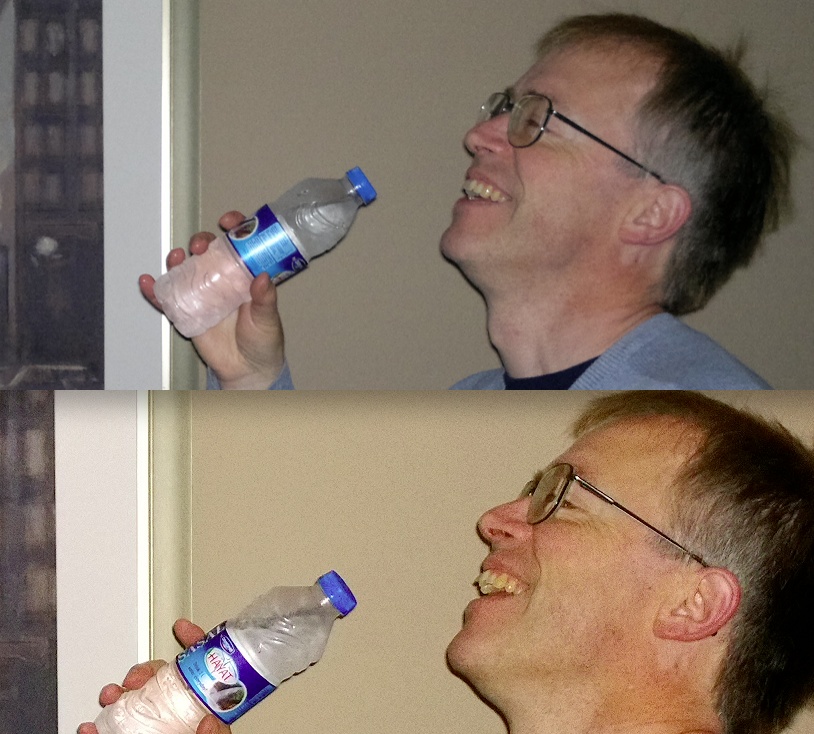
This may be Xenon vs Xenon, but physics wins out here, with the larger (1/1.5") sensor and larger, brighter flash on the Lumia 1020 producing the crisper, better lit results. Yes, there's no shortage of digital noise in the bottom image, but the level of detail is great. Only the Nokia 808 would beat the 1020 here, I think.
Nokia N8: 6 pts, Nokia Lumia 1020: 9 pts
Test 9: Party scene mock-up, multiple ambient light sources, moving subject, 2 metres
Again, with me deliberately moving, but this time with two artificial light sources giving ambient 'atmosphere', here are the shots from the Nokia N8 (left) and Nokia Lumia 1020 (right, using a little PureView zoom so as to match the framing):
Again, better colour accuracy and far better atmosphere from the newer device. Here are central crops, for easy comparison, Nokia N8 on top and Nokia Lumia 1020 on the bottom:
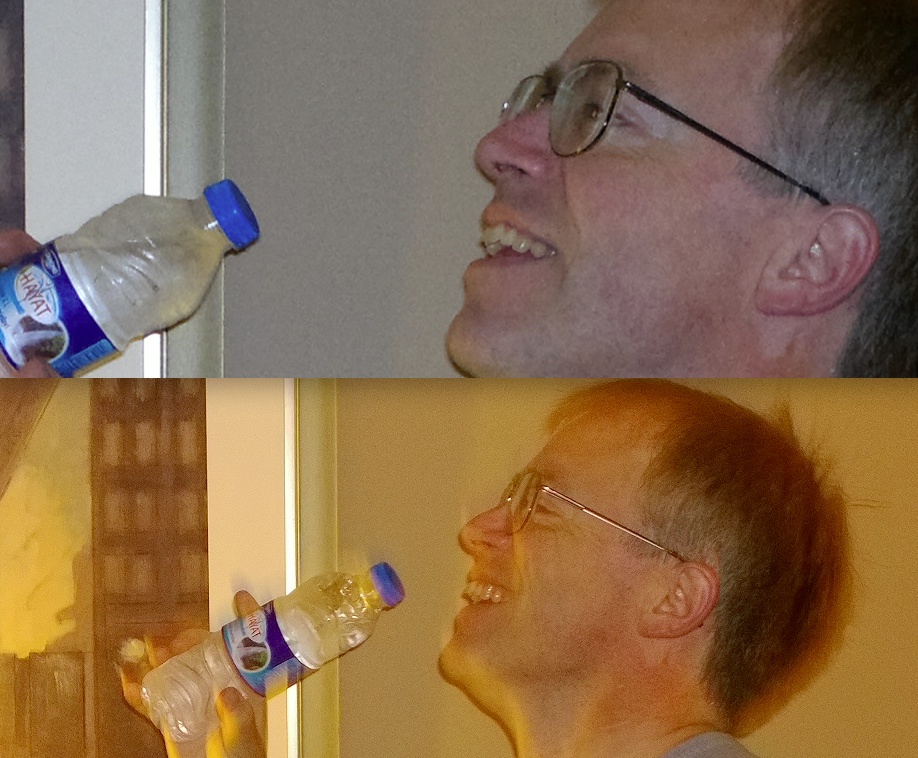
The crispness of the Lumia 1020's Xenon-lit shot has been tempered here slightly by its much larger aperture (f2.2, compared to f2.8 on the N8) and bigger BSI sensor allowing in a lot more ambient light into the photo. This gives atmosphere, yes, but there's an element of visual uncertainty (think multiple shadows and ghosting) in the subject, with detail reflected from ambient lighting also making it into the sensor in the 1/30s exposure time, whereas in the N8's case the photo looks much the same as without the extra room lights.
Tough to judge, with the 1020's shot having more character and colour accuracy but not being quite as Xenon-crisp as we're used to. Nokia N8: 7 pts, Nokia Lumia 1020: 6 pts
Verdict
As usual, it's interesting to tot up the scores: Nokia N8: 65, Nokia Lumia 1020: 67.
So a win for the much newer device, though by a comparatively small margin. Don't take the scores too seriously though, since any result here will depend hugely on the choice of subjects and how often (or rarely) I allowed PureView zoom at capture time. I picked the subjects almost at random but tried to include as wide a variety as possible.
The takeaway here is the answer to the question that most Nokia N8 owners have been asking (at least, those who didn't already upgrade to the 808 PureView): "My phone is getting old and battered but I want something with a camera that's as good and yet which is much more modern in terms of OS and ecosystem. Should I be considering the Lumia 1020?"
The answer is a definite 'yes' from me. The narrow victory here doesn't reflect a number of extra camera-related factors which N8 owners will want to also take into account:
- Nokia Pro Camera has more settings to fiddle with and a far more intuitive UI.
- Optical Image Stabilisation helps keep the phone still during capture.
- Terrific OIS-smoothed 1080p video capture.
Provided you're not addicted to Symbian (in which case run, don't walk for one of the remaining 808s!), you can also then add in the ever-expanding Windows Phone ecosystem, a far faster device overall, and a feature set which includes almost everything that N8 owners will have been used to.
Asking me to pick between an 808 and a Lumia 1020 is a very tough call. However, much as I love the venerable old N8, I'd pick the Lumia 1020 in a heartbeat.


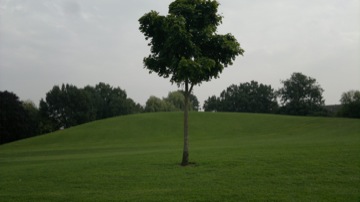

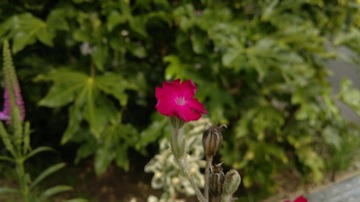
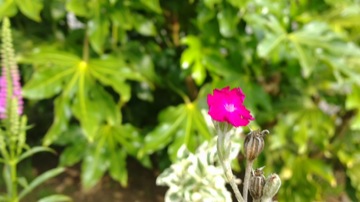



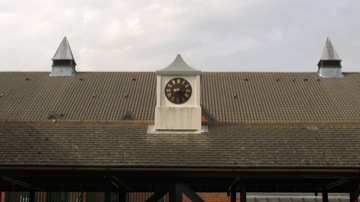


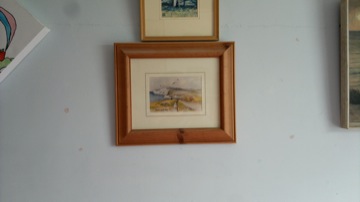
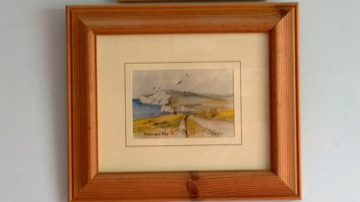
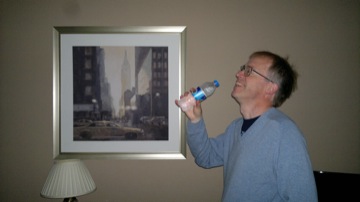
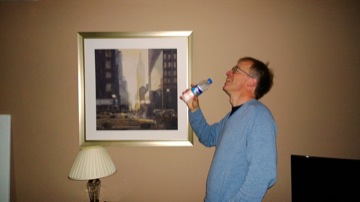
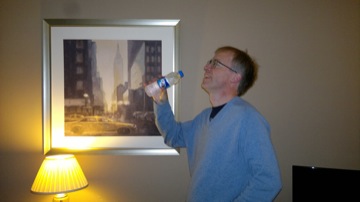
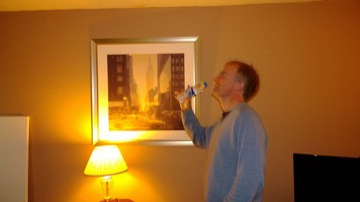
No hay comentarios:
Publicar un comentario